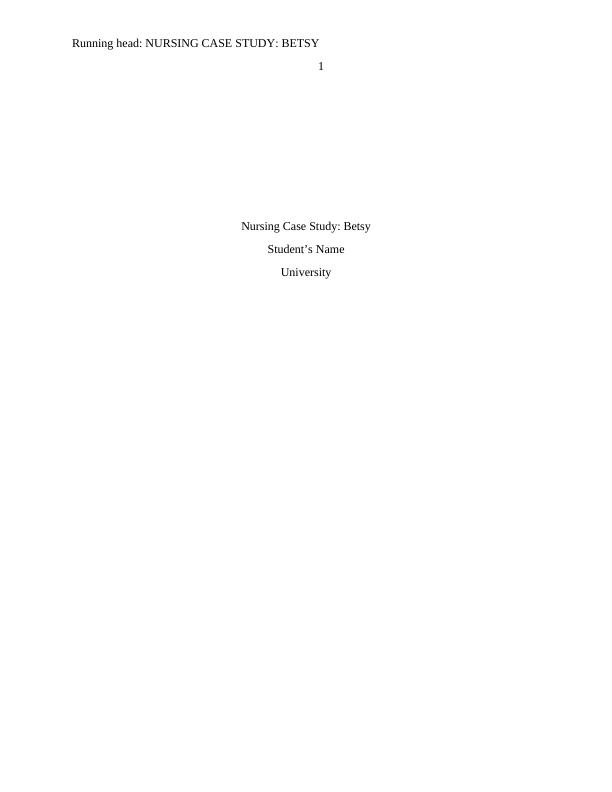Nursing Case Study: Betsy
Write a 2000 word report answering questions from a clinical scenario, exploring pathophysiology, pharmacology, and psychosocial aspects.
10 Pages3121 Words160 Views
Added on 2022-11-29
About This Document
This nursing case study explores the symptoms, diagnosis, and treatment of Betsy's acute coronary arteries condition. Learn more about the pathophysiology of angina, ECG rationale, and the use of medications like GTN, diltiazem, pravastatin, aspirin, and ticagrelor. Understand the link between depression and chronic illness in patients with acute coronary syndrome.
Nursing Case Study: Betsy
Write a 2000 word report answering questions from a clinical scenario, exploring pathophysiology, pharmacology, and psychosocial aspects.
Added on 2022-11-29
ShareRelated Documents
End of preview
Want to access all the pages? Upload your documents or become a member.
Betsy Case Study: Acute Coronary Syndrome and ECG Analysis
|10
|3051
|26
Nursing, Clinical Scenario Assignment
|15
|2983
|215
ACUTE CORONARY SYNDROME
|12
|3546
|1
Nursing Pathophysiology/Pharmacology
|9
|2253
|354
Acute Coronary Syndrome: Pathophysiology, Diagnosis, and Treatment
|11
|2532
|37
Acute Coronary Syndrome: Pathophysiology, Diagnosis, and Treatment
|13
|3190
|91



